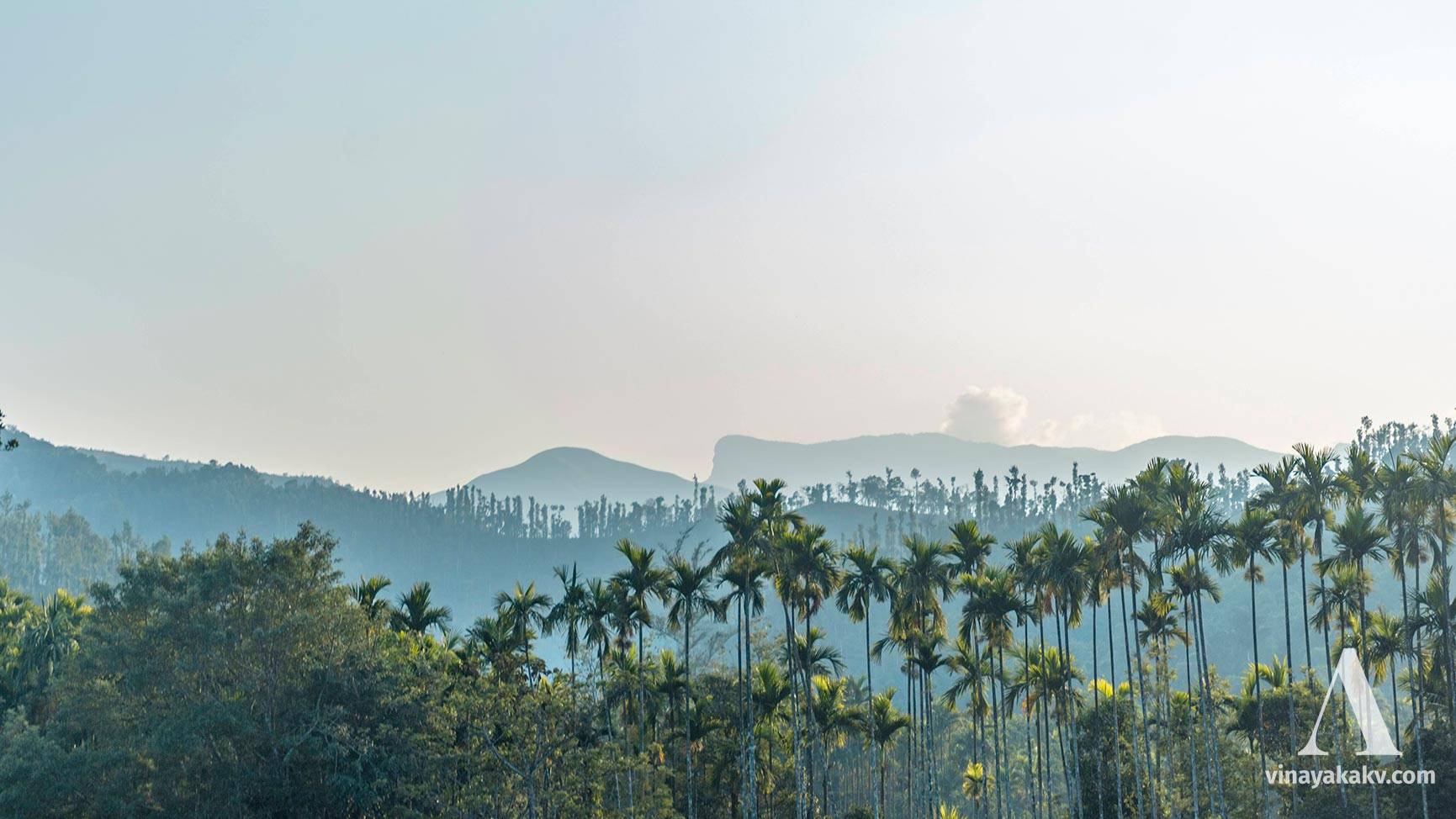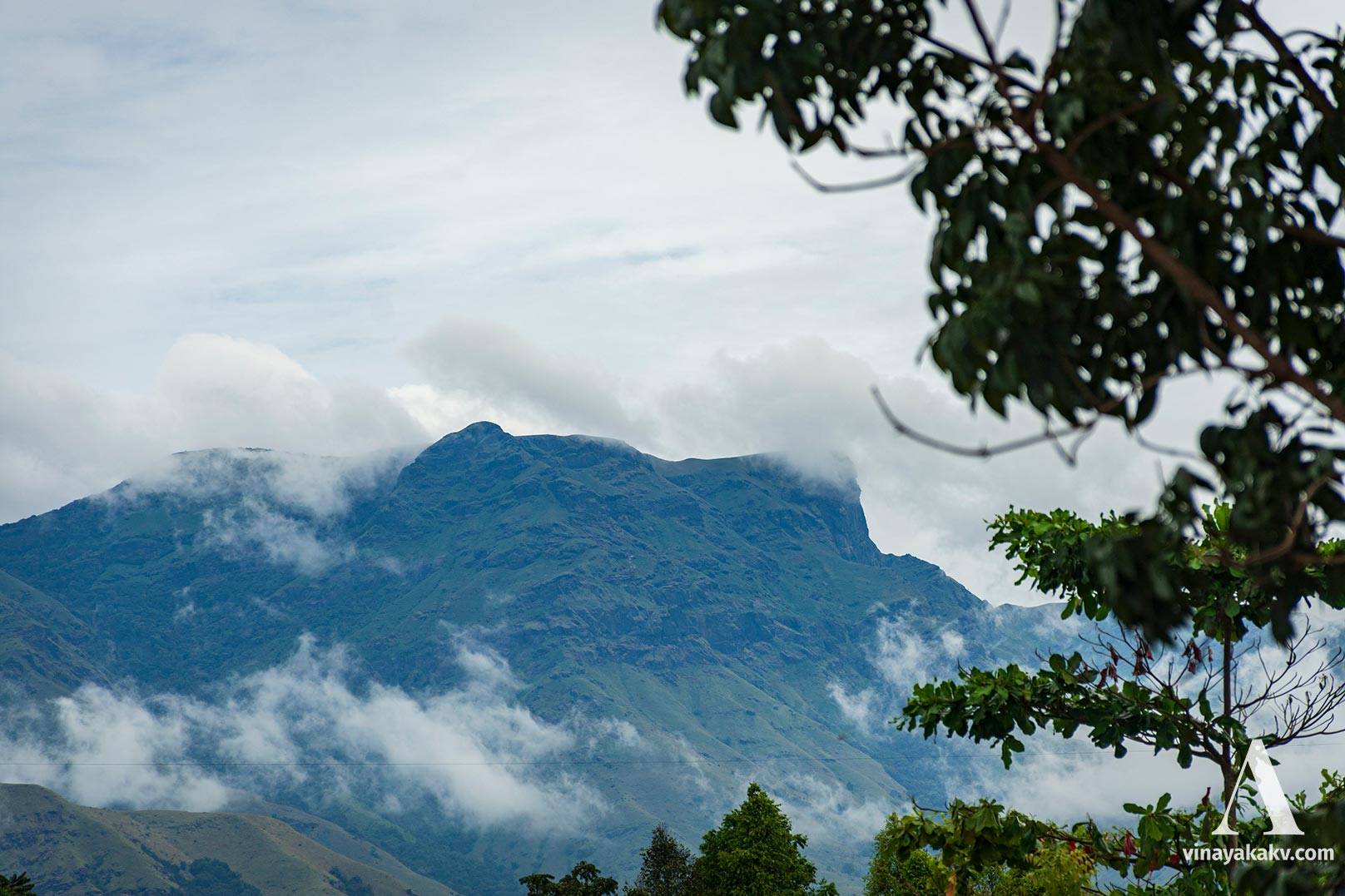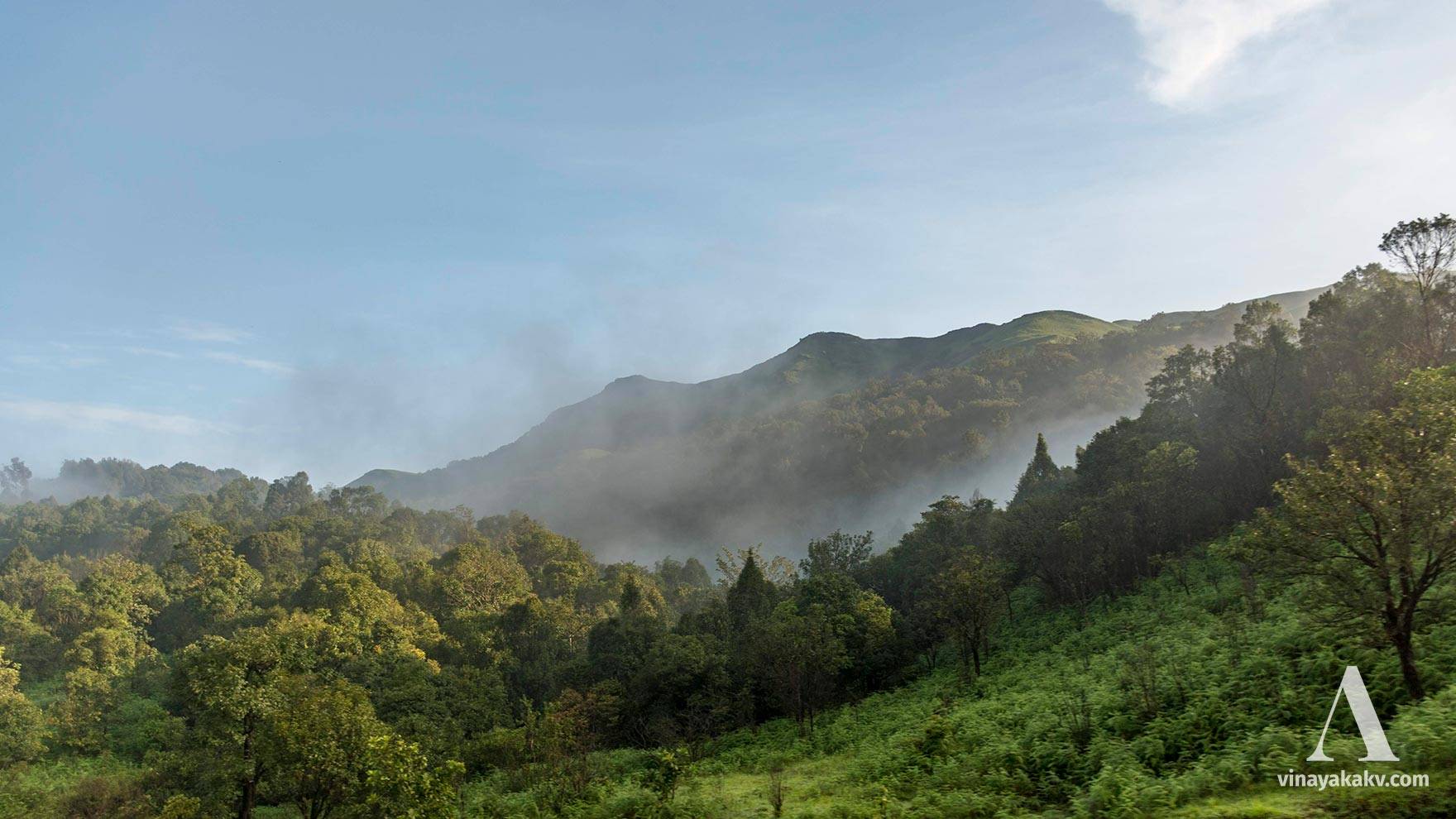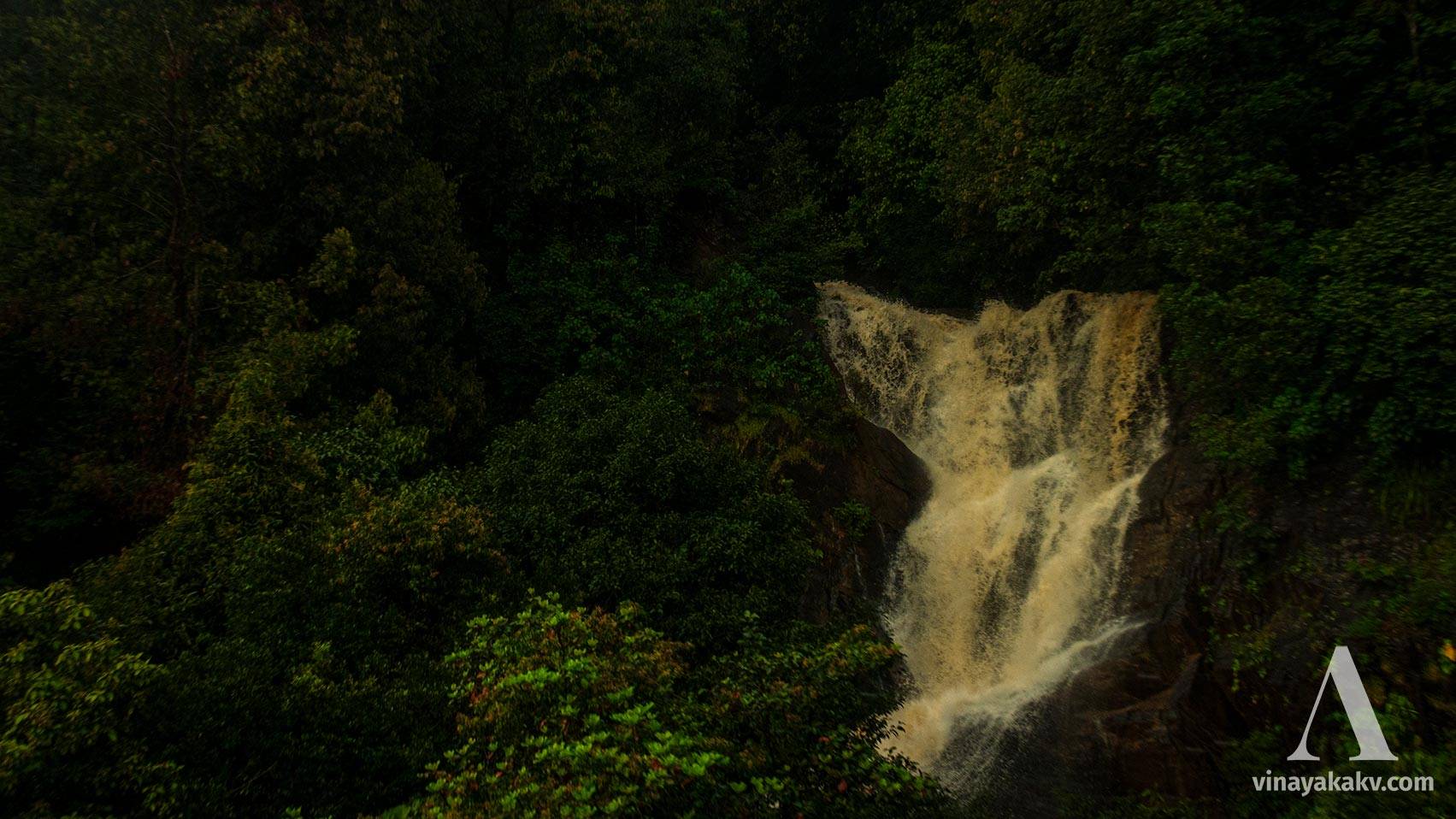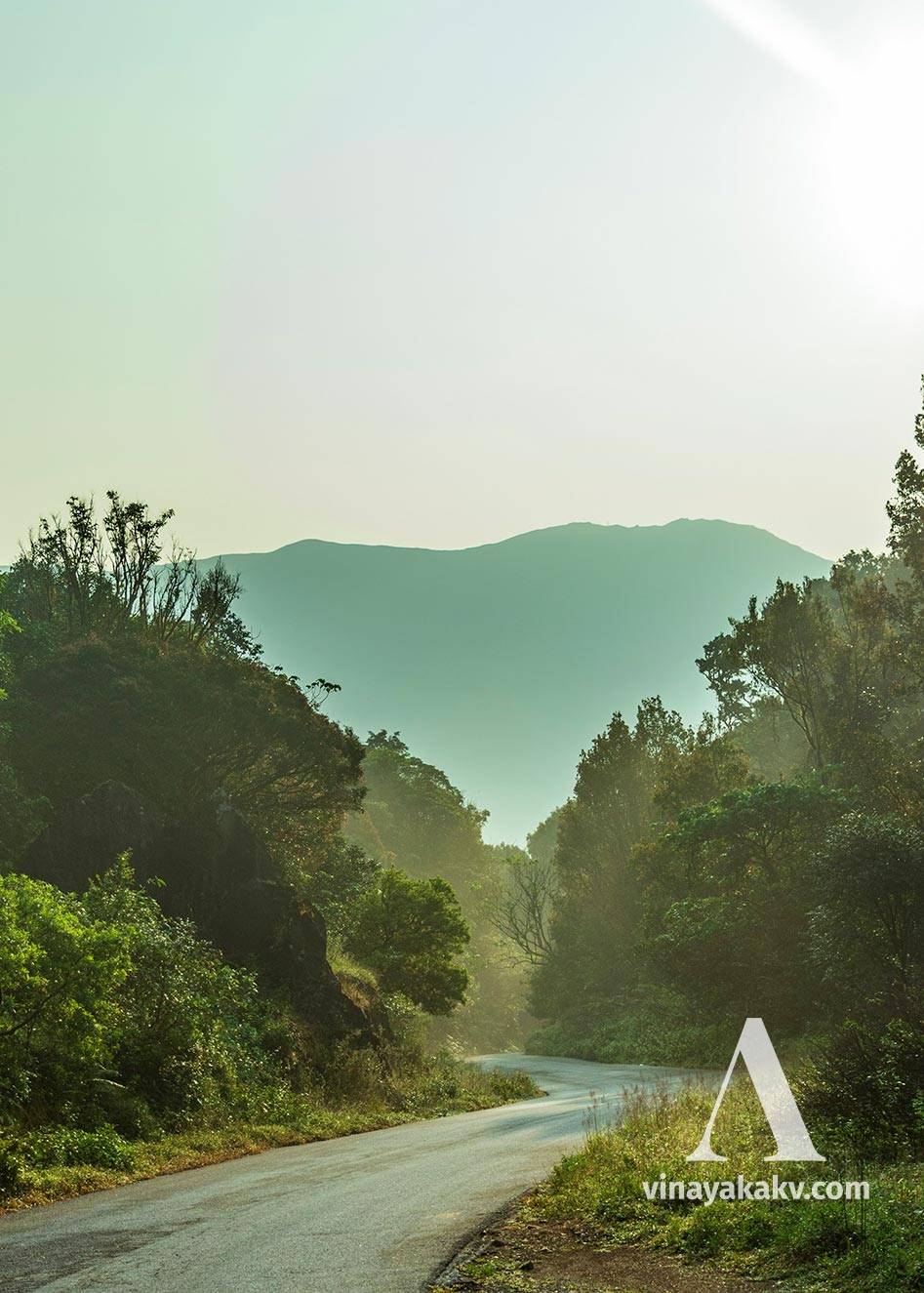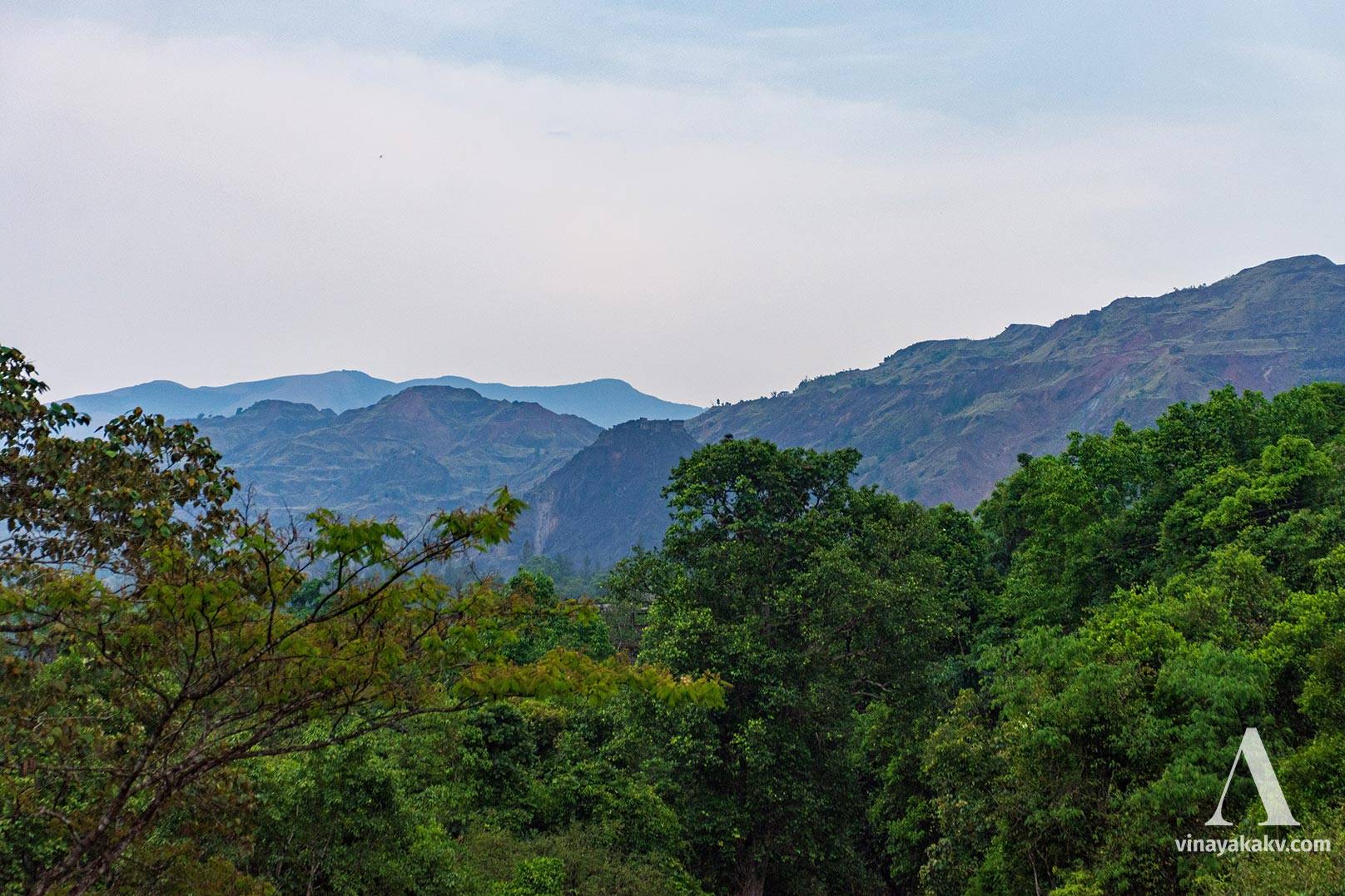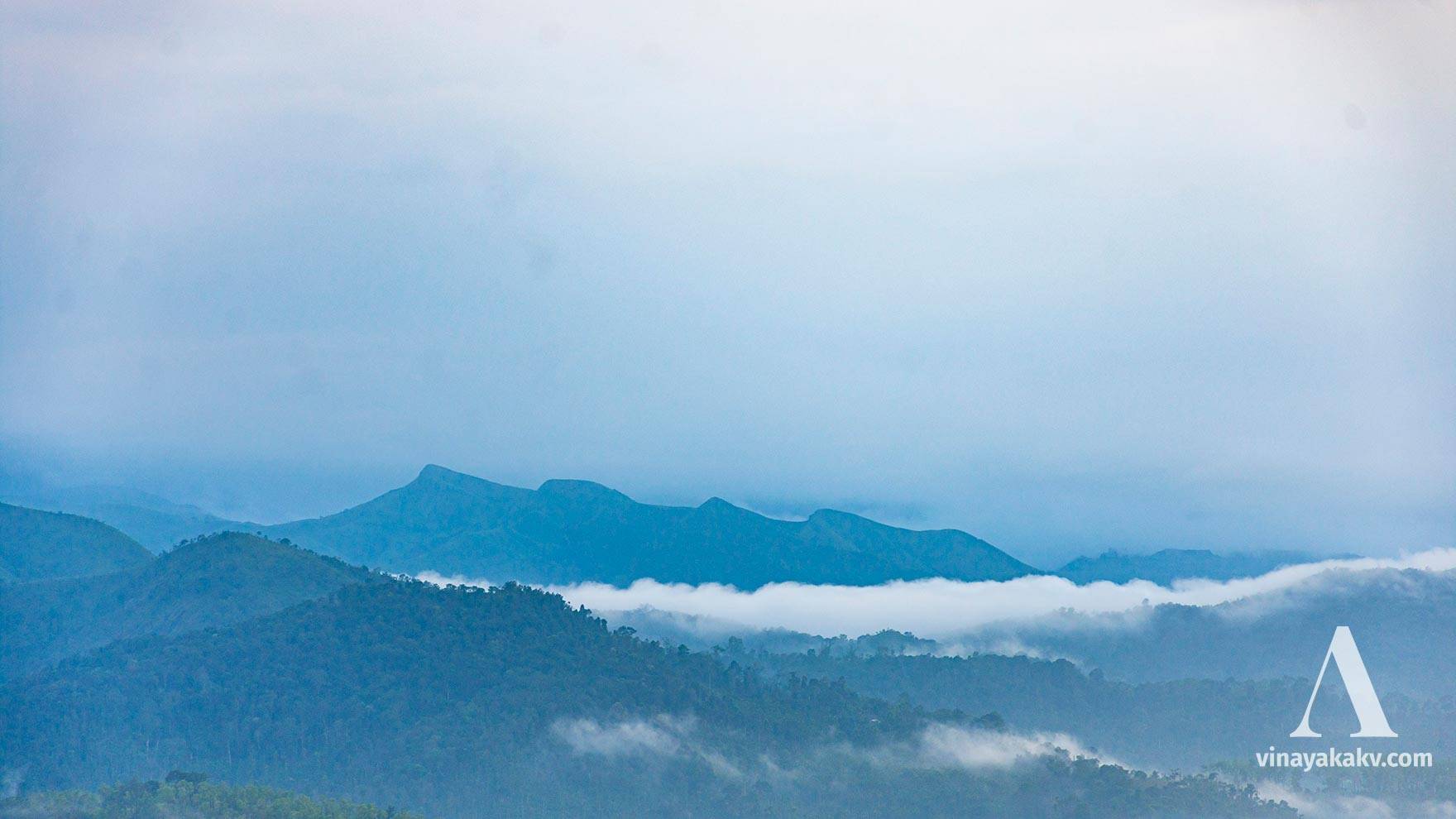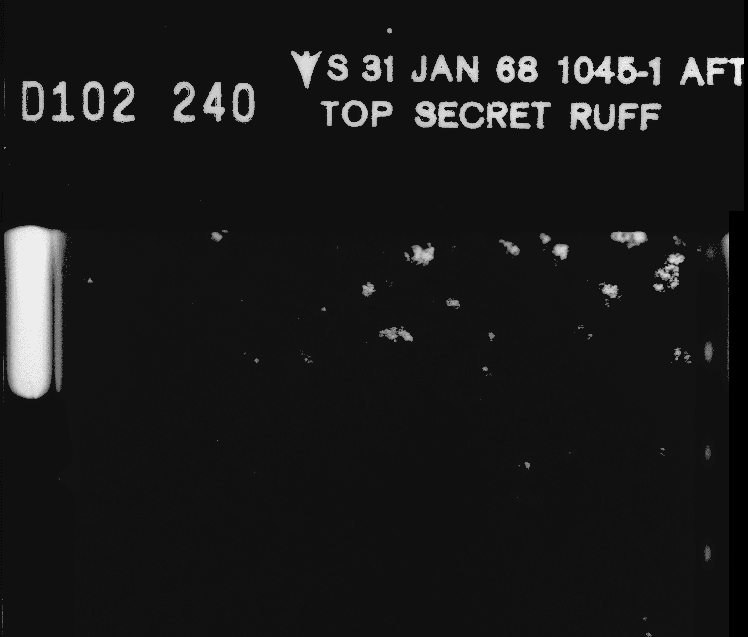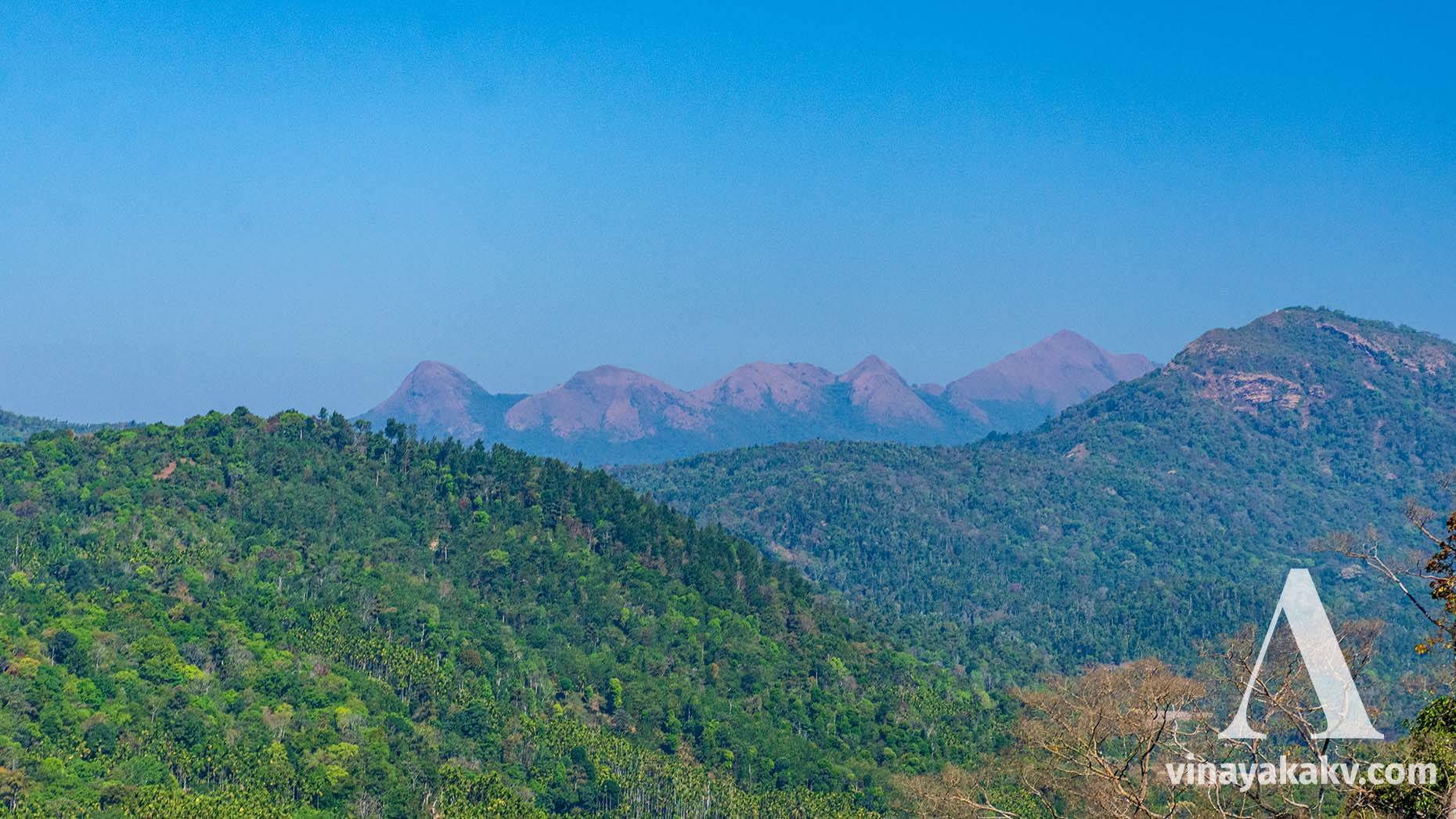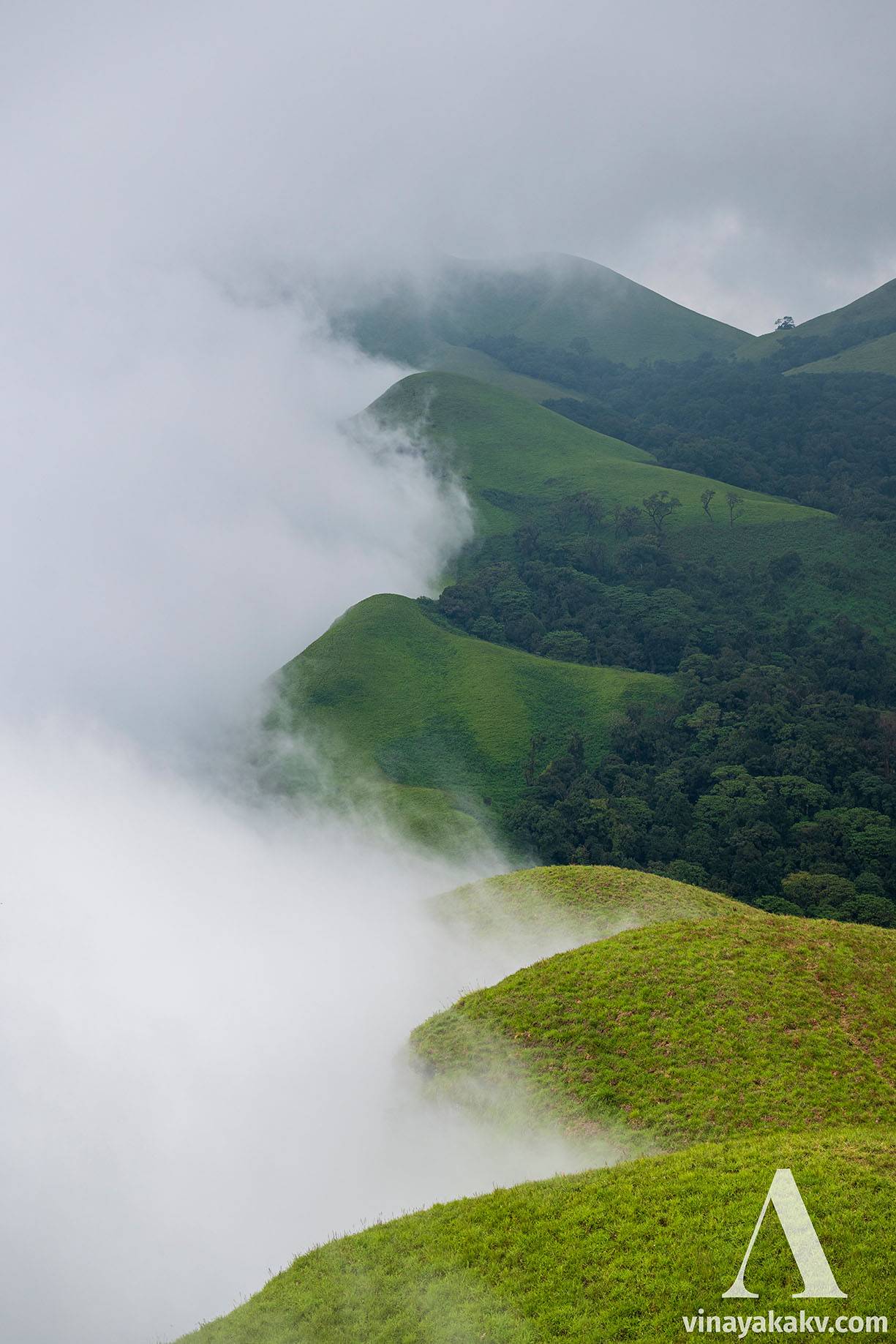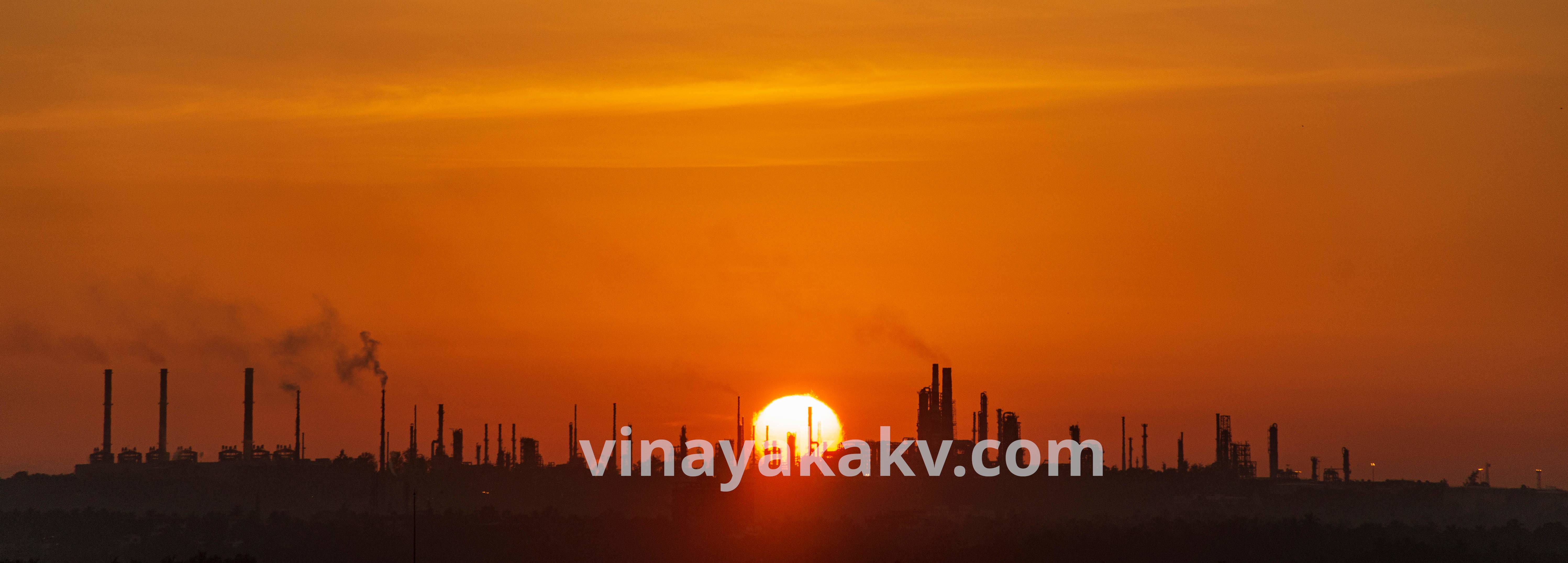
When the monsoon clears the air, a beautiful display starts to appear at the West Coast of India...
When I was studying Masters’s at NITK, I traveled a lot between Mangaluru and my native. The reason was twofold — First, the distance is small; Second, the road passes Kuduremukha National Park (KNP) and offers a scenic view of it. The KNP is located in the Western Ghats of Karnataka. It is named after the highest peak in its range. The Kuduremukha peak derives its name from its resemblance to the face (”mukha”) of the horse (”kudure”) when viewed both from Malenadu and the coast.
The Kuduremukha Peak, viewed from Malenadu
The view of the Kuduremukha mountain is obscured by its foothills at the Malenadu. An uninterrupted view of the Kuduremukha mountain can be seen from the coast.
Kuduremukha Peak, viewed from the Coast
The KNP has a wide range of ecosystems, ranging from the dense tropical forests fed by the torrential monsoon to the rolling grasslands covered with grass and ferns. These forests and grasslands often intersect to create an ecosystem unique to the Western Ghats known as ”sholas.”
Various ecosystems of the Kuduremukha National Park summarized in one image. From the right side to the middle, tropical rainforests; at the left, the "shola" mountains.
The KNP is important hydrologically as well. The main river that feeds most parts of North Karnataka and Andhra Pradesh, the Tungabhadra, originates here as two separate rivers - Tunga and Bhadra. The water source for Mangaluru city, the Netra river, also originates here.
The Gangadikallu mountain, where the Tunga river originates
We find numerous waterfalls feeding these rivers. While some are at the roadside, others are deeply nestled inside the jungle. Access to the waterfalls in the jungle is restricted.
One of the roadside waterfalls at KNP.
While the KNP seems like a calm, undisturbed place today, it was not the case always. After the Iron Ore Magnetite was discovered here in the early Indian independence era, it was soon exploited starting in 1976 for the next 30 years. The mine was operated by a public sector company Kudremukha Iron Ore Company Limited (KIOCL), founded just for this purpose.
KIOCL built a 30km stretch of road to connect Kuduremukha and Mangaluru capable of carrying heavyweight vehicles to construct the mining facilities. This is the same route that I travel to Mangaluru and back. The road travels through plain, uninhabited forests and sholas — which would be pointless without the KIOCL as there is a prospect of a much shorter route traversing through much less forest.
What seems like a beautiful route today, fragmented the forest
KIOCL operated on a mountainous region covering approximately 42km2, once a grassland. The mountains were blasted (😢) to extract the Iron ore beneath them, then processed.
The mining area during preparation (during 1972) and after the mining (during 2020) with North pointing top. You can see the destruction of shola forests and the deformation of mountains. The Bhadra river flows from West to East, as seen at the top. Some increase in the forest cover at the north is due to invasive species planted by KIOCL in the shola grasslands.
KIOCL has made a documentary film named “Taming of the Wild Horse,” celebrating its success with excellent details on the mine’s founding, construction, and operation.
Taming of the Wild Horse by KIOCL
While the building of the road, factories, the pipeline, and mining were seen as a great deal and significant contributors to the economy back then, they did great harm to nature. The mud discharged from the mined mountains into the Bhadra river threatened the downstream reservoirs and agriculture communities during the monsoons. The Iron ore extracted from the blasted mountains was of a low concentration. To dump the mud left after extracting the ore, KIOCL built a tailing pod across the nearby Lakya river, a tributary of Bhadra, by submerging a 100m deep shola valley. This tailing pond once developed cracks and was at significant risk. The blasting operations also destabilized the rocks of the surrounding mountains.
The Lakya valley (during 1972) and after the tailing pond (during 2020) with North pointing top. After stopping mining in 2005, some non-native trees are growing in the mud-covered area of the tailing pond. The River Bhadra flows from West to East seen in the bottom-right. White patch at the bottom is the construction of the road to Mangaluru.
We still see the mountains that were mined during the KIOCL era. Although there is no shola grassland there, we can see the patches of the grass growing on them as a sign of recovery.
The mountains that were mined. We still see KIOCL facilites sych as power line and a bridge.
In the name of mitigating the losses done at the mining site, KIOCL planted several foreign, invasive tree species such as Acacia and Eucalyptus in the grasslands, causing damage in a different sense by disturbing the habitats. Many of them still survive today.
Foreign tree species with the mining mountains in the background
After the end of the mining lease, KIOCL approached the government for an extension for around 30 years. By then, the KNP was created, and various scientific reports clearly established the harm done by the KIOCL. Wildlife conversationalists and Ecologists challenged the proposal of extension in the Supreme court. They even raised public awareness by filming documentaries and communicating scientific findings. One of such documentaries, “Kuduremukha - Mindless Mining,” detailed the destruction caused by the mining and called to end the mining operations.
While the ruling to end the mining was issued in 2002 by the Supreme court, the mining actually ended in December 2005. KIOCL had plans to extend its operations to nearby Gangadikall mountain (mentioned earlier) and Jamble mountains. This would have polluted the Tunga river and submerged a new valley to contain the tailings. Thanks to the efforts of conversationalists, these mountains still survive to the day.
Sharp mountains of Jamble. If KIOCL was granted an extension, they would not have been like this.
The mined mountains are slowly recovering, as indicated by the growth of small patches of grass on them. The mud discharge into the Bhadra river during the monsoon is significantly reduced. The water runoff is still high in the mined mountains, and several waterfalls appear on them during the rains. The forests destroyed to build the road to Mangaluru have recovered fantastically. The Kuduremukha settlement is mostly empty now, and the forest is taking hold of the disturbed habitat. The threat of the invasive species still looms in some regions; nature will slowly heal itself, given that human beings don’t disturb it again.
Some people around Kuduremukha and Kalasa still think that the closing of KIOCL was a disaster and had to be avoided. They cite better transportation (the road that KIOCL built is in lousy condition now) and better economic opportunities as the reasons. However, they never see that all of the improvements would have come at the cost of the environment. Maybe the abundance of mountains makes them think destroying one or two mountains is not a big deal. Educating them about the environment and conservation is an important task. We must understand that we cannot survive by destroying the environment, as we are also a part of it.
The satellite imageries used in this article are courtesy of CORONA/ISRO Bhuvan (for 1970’s imagery) and MaxRar Technologies/Google Earth (for 2020’s imagery).
Sholas of Kudremukha — A documentary film by Karnataka Forest Department assisted by NITK. Although the visuals are good, the storyline and narration are not. Some repeated contents are present.
ನಮ್ಮ ಶೋಲಾ — The Kannada version of the above documentary contains some visuals different than that.
In the above documentaries, there is a clip showing the mined mountains with patches of grass.
Men of The Mist— A good documentary by Dilan Mandanna highlighting the conservation efforts ongoing at KNP.
KUDREMUKH-GLORY TRIUMPHS— A 144p documentary in Kannada similar to “Taming of the Wild Horse” celebrating the KIOCL’s achievements.
How we won the Kudremukh Mining Battle — TedX speech by Praveen Bhargav about the battle to stop KIOCL mining. He says that they were branded as foreign agents trying to stop an industry of national importance at some point! That’s very true today, except the branding changes to “traitor.”
The Kudremukh Saga — A Triumph for Conservation — An article by Shekar Dattatri in Conservation India detailing the harms done by KIOCL and the battle to stop it.
Impact of Iron Ore Mining in Kuduremukh on Bhadra River Ecosystem — An IISc report detailing the changes in sediment load and other ecological parameters due to mining by KIOCL.
When the monsoon clears the air, a beautiful display starts to appear at the West Coast of India...
CORONA - A timetravel into the past
What started as a US spy mission helps us to understand ecological changes today.
A story of the journey across the tallest, biodiverse Western Ghat mountains of Karnataka.
At the Edge of the Western Ghats
Extortion to the accessing nature and a highly biodiverse environment being disrespected...
I write a new article usually once a month. Whenever I publish, you will get an email in your inbox.
